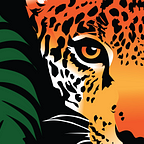The Role of CGI in Conservation
Madison Lemelin
Disney’s The Lion King reboot has made quite an impact. Everything in the film — from the vast African savannas down to the dung beetles — is created from computer generated imagery (CGI), making for an unparalleled visual experience. While filmmakers and critics are discussing how the technological advancements will change the way that movies are made, The Lion King also brings about a new question: Could advanced animation play a role in the future of conservation?
The wide variety of surreally life-like animals in the opening ballad “Circle of Life” almost fools audiences into believing that Africa is filled with an abundance of thriving species, living together in the same fantastical ecosystem. The sad truth is that the immense landscapes and unique species featured throughout the film face serious danger from human influence, habitat loss and the climate crisis.
Lions like Simba and his family, the brave rulers of the grasslands in the film, often fall prey to big game trophy hunters. In fact, their population numbers have been cut in half since the debut of the original animated film in 1994. Supporting character species are also in danger. Mandrills like Rafiki are over-hunted for the bushmeat trade. A recent study estimates that climate change may wipeout meerkats, like Timon, within the next 50 years. The International Union for Conservation of Nature listed Giraffes as Vulnerable in 2016 and the Black Rhinoceros Critically Endangered in 2011. Even the worst characters in the movie, the Spotted Hyenas, are suffering from population decline. Not to mention, more than 20,000 African Elephants are poached each year for their ivory. And with the ban lifted on importing sport-hunted elephant trophies into the U.S. from certain African countries, the film’s elephant graveyard is a looming reality.
But while the utopia of biodiversity The Lion King portrays may not be in sync with reality, the technology used to create it could be beneficial. The morphology of animals on the brink of extinction could be “saved” for future scientific analysis, not just entertainment. CGI could create the virtual simulations necessary to study vulnerable species and habitat in a way that does not disturb delicate ecosystems. In these ways, the perfection of CGI technology can serve as a form of preservation. These advancements could make it possible to not only learn about vulnerable species and their habitat, but see them through digital recreation. This could be incredibly beneficial for the future of conservation and conservation education.
The central theme in The Lion King is understanding our place in the ‘circle of life.’ Since humans are the main threat to these species and their habitats, it’s our job to protect those that remain. If we don’t take immediate conservation action to mitigate anthropogenic threats and the negative effects of climate change, the only route for preservation may be a virtual one.
Madison Lemelin is the Conservation Publications Officer at Rainforest Trust.
Originally published at Rainforest Trust — Species | Communities | Planet.
